IOS APP
development company
As the Best mobile application development services company,
we are proud to say that we are one of the top app development companies.
Technology We Use







Our Latest work
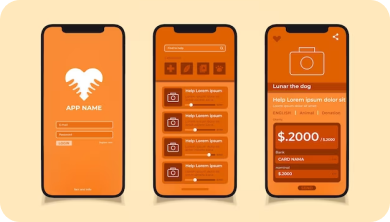
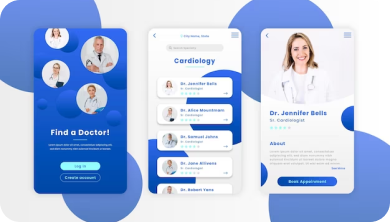
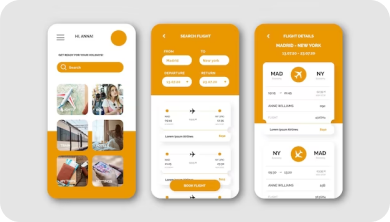

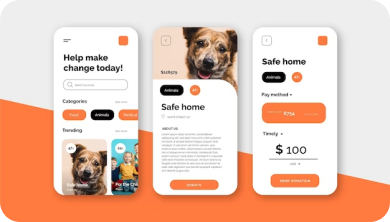
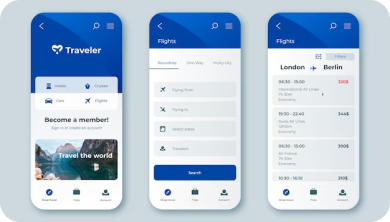
Customers
Our App Development Process
Requirement Gathering
Development
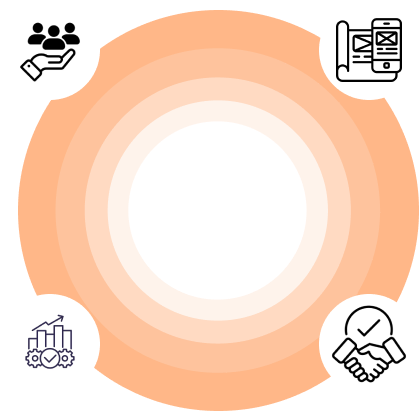
Prototype
Support & Maintenance
How we Build iOS Applications?
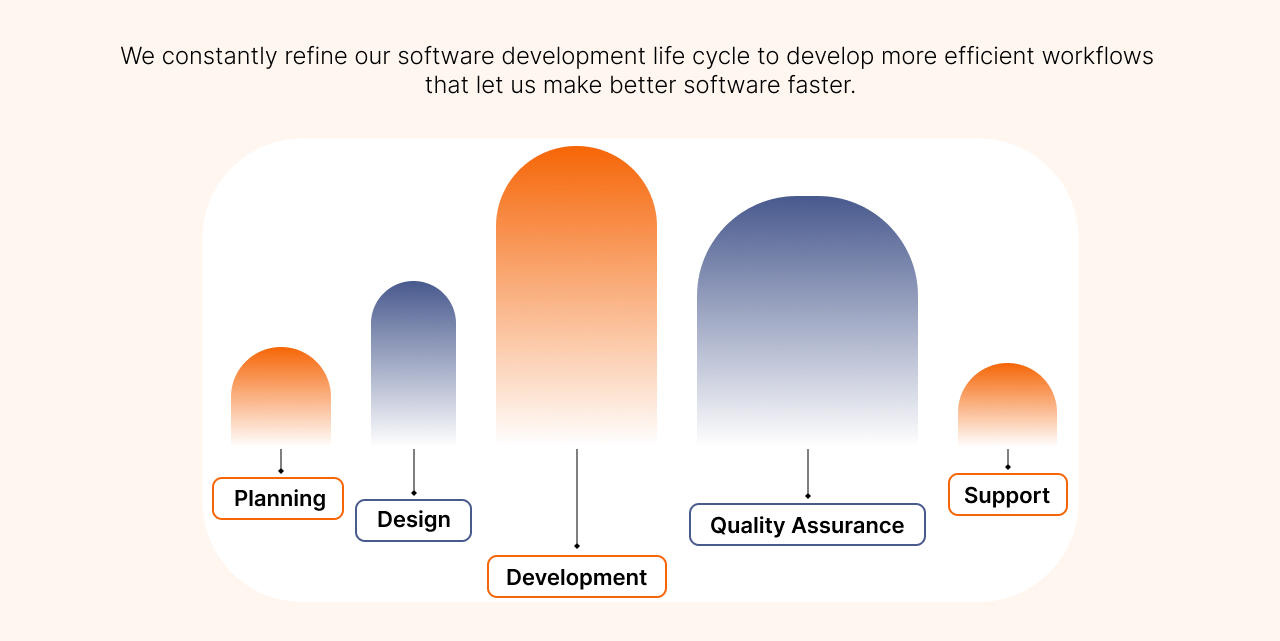
Frequently Asked Questions (FAQ)
1. Understand the requirement
2. Develop the Product
3. Test the product.
1. Building User Flow / Diagram for each screen
2. Creating Wireframes
3. Choosing Design patterns, palettes, and elements
4. Creating mockups
5. Creating an animated prototype and asking testable questions
6. Give final touches to the mockup based on user feedback
Mobile Application Development
Mobile application development is the process of creating software applications that run on a mobile device, and a typical mobile application utilizes a network connection to work with remote computing resources. Hence, the mobile development process involves creating installable software bundles (code, binaries, assets, etc.) , implementing backend services such as data access with an API, and testing the application on target devices.
Mobile application development is the process of creating software applications that run on a mobile device, and a typical mobile application utilizes a network connection to work with remote computing resources. Hence, the mobile development process involves creating installable software bundles (code, binaries, assets, etc.) , implementing backend services such as data access with an API, and testing the application on target devices.
Mobile application development is the process of creating software applications that run on a mobile device, and a typical mobile application utilizes a network connection to work with remote computing resources. Hence, the mobile development process involves creating installable software bundles (code, binaries, assets, etc.) , implementing backend services such as data access with an API, and testing the application on target devices.
Mobile application development is the process of creating software applications that run on a mobile device, and a typical mobile application utilizes a network connection to work with remote computing resources. Hence, the mobile development process involves creating installable software bundles (code, binaries, assets, etc.) , implementing backend services such as data access with an API, and testing the application on target devices.
Mobile Applications and Device Platforms
There are two dominant platforms in the modern smartphone market. One is the iOS platform from Apple Inc. The iOS platform is the operating system that powers Apple’s popular line of iPhone smartphones. The second is Android from Google. The Android operating system is used not only by Google devices but also by many other OEMs to built their own smartphones and other smart devices.
Although there are some similarities between these two platforms when building applications, developing for iOS vs. developing for Android involves using different software development kits (SDKs) and different development toolchain. While Apple uses iOS exclusively for its own devices, Google makes Android available to other companies provided they meet specific requirements such as including certain Google applications on the devices they ship. Developers can build apps for hundreds of millions of devices by targeting both of these platforms.
Alternatives for Building Mobile Apps
There are four major development approaches when building mobile applications
- Native Mobile Applications
- Cross-Platform Native Mobile Applications
- Hybrid Mobile Applications
- Progressive Web Applications
Each of these approaches for developing mobile applications has its own set of advantages and disadvantages. When choosing the right development approach for their projects, developers consider the desired user experience, the computing resources and native features required by the app, the development budget, time targets, and resources available to maintain the app.
- Native Applications
- Cross-Platform Applications
- Hybrid-Web Applications
- Progressive Web Applications
Why Choose the Hybrid/Cross-platform Approach?
One problem with native mobile application development is that it requires a highly specialized skill set. Although there are large and vibrant developer communities for C and Java — the language families that are mostly used for native development –, there are fewer developers who are knowledgeable in platform-specific versions of those languages and their respective IDEs. In fact, skilled native app developers are in such demand, that many companies are hard-pressed to hire and retain them on staff, and instead they frequently have to resort to outside 3rd party design and development houses to build their apps for them.
How Hybrid and Cross-platform Frameworks Work?
Hybrid apps allow developers to use web technologies of HTML5/CSS/JavaScript and then encapsulate those web applications in a container that allows the web application to act like a native application on the device. Since hybrid mobile apps are just web apps running on an embedded browser environment, most of the code from a web app can be used to build a mobile app. As rendering and runtime performance of mobile browsers are ever-increasing, hybrid development is a viable alternative for web developers who want to build mobile apps quickly.
Similarly, PWAs are written using traditional web application programming technologies usually including some variant of JavaScript, HTML5, and CSS, and are accessed initially through a browser on the device or computer.
Most cross-platform frameworks such as – React Native and Native Script – provides native components to work with the cross-platform code, while some others such as Flutter and Xamarin compiles cross-platform code to the native code for better performance.
The Mobile Application Development Lifecycle
There are two interlinked core components of a mobile application: 1) the mobile application “Front-End” that resides on the mobile device, and 2) the services “Back-End” that supports the mobile front-end.
Front-end vs. Back-end
In the early days of the modern smartphone applications era, mobile applications went through a similar evolution as first websites. At first, the applications and sites where wholly contained within themselves and acted as little more than static advertisements for the brand, company, product, or service.
However, as connectivity and network capabilities improved, the applications became increasingly connected to sources of data and information that lived outside of the app itself, and the apps became increasingly dynamic as they were able to update their UI and content with data received over the network from queries to data sources.
As a result, the mobile front-end applications increasingly rely on and integrated with back-end services which provide data to be consumed through the mobile front-end. Such data can include, for example, product information for e-commerce apps or flight info for travel and reservation apps. For a mobile game, the data may include new levels or challenges and scores or avatars from other players.
How Front-end ‘Talks’ to the Back-end?
The mobile front-end obtains the data from the back-end via a variety of service calls such as APIs. In some cases, these APIs may be owned and operated by the same entity developing the mobile application. In other cases, the API may be controlled by a third party and access is granted to the mobile application via a commercial arrangement.
For example, a developer may obtain social media or advertising content by making calls to media or advertising company services. In this case, a developer may have to sign a contract in order to obtain credentials and a key that grants access to the API and governs how that developer can use it, how much it will cost, or how frequently it may be called, or how much data can be requested over what time period.
Why Developers Use a Cloud-backend?
For most of the applications, mobile developers are responsible for creating and managing the back-end services for their application. The mobile developer may not be an expert or even particularly skilled in spinning up and running a back-end infrastructure.
In such a case, developers may prefer to take advantage of a cloud services provider — a backend-as-a-service provider — that handles all of the drudge work and heavy lifting of managing back-end capabilities, so the developers can focus purely on the features and functionality they are building in their app, without having to worry about scalability, security, and reliability.
The Mobile Application Front-End
The mobile front-end is the visual and interactive part of the application the user experiences. It usually resides on the device, or there is at least an icon representing the app that is visible on the home screen or is pinned in the application catalog of the device. The application can be downloaded from the platform app store, side-loaded directly onto the device, or can be reached through the device’s browser, as in the case for PWAs.
What a Front-end Development Workflow Looks Like?
When a developer says they are a mobile application programmer, they are most often referring to this front-end part of the application, and they are skilled in the languages and technologies that are used to create this front-end application.
Depending on the size of the team producing the app, there may be many different people involved in the design and development of the front-end mobile app. The team size can range from a single developer who does everything associated with building the app, to tens, hundreds, and more people with specialized skills.
For example, there may be dedicated creative/graphics designers who are responsible for creating visual elements of applications like icons, backgrounds, colors, themes and other parts of the app. The team may also have user experience and user interface designs who work on the layout of the components, how they interact with each other and the user. In the case of certain types of games, a team may include motion graphics developers and even engineers who develop engines that govern the physics of how components move in the app, like a car in a racing game.
How Mobile Aps Integrate with the Backend?
Regardless of the size of the team, a critical element of the development effort is building the app logic that is responsible for making network calls to the back-end services, retrieve data and update the data in the back-end systems with new information generated from the app.
These back-end services are typically accessed through a variety of application programming interfaces, most commonly known as APIs. There are different types of APIs, such as REST and GraphQL, and there are also a wide variety of means and styles of accessing them. While some back-end service APIs are available directly to the application through calls in the platform itself, many of the specialized services have to be integrated into the app via a software development kit, commonly known as an SDK. Once the SDK has been added to the app via the development environment, then the application can make use of the APIs defined in the SDK.
How to Interact with the Backend Data?
An example of a back-end service for a mobile front-end could be a database that contains information used in the app. To access the database directly, the mobile developer would have to know the network location of the database, the protocol for accessing the database, the credentials for authenticating and authorizing the data access, and the specific database commands needed to extract the needed data.
Alternatively, the developer can utilize a specialized API when interacting with the database; the developer may only have to know the parameters needed in a method call to get or updated the needed information. In some cases, the mobile developer may develop these APIs themselves or use the API definition provided to them by the owner/operator of the back-end resource.
Typically, a REST API is used to interact with data sources on the cloud, such as a cloud database. A GraphQL API is also another option for developers, as it makes easy to work with backend data in a mobile application. GraphQL provides querying support through a single API endpoint, and a data schema that can be used to build and easily extend data models that are used in the app.
The Mobile Application Back-End
Regardless of what front-end platform or development methodology is being used, delivering high-quality mobile applications that delight and retain users requires reliable back-end services.
Given the critical importance of back-end services for the success of the mobile application, the developers have several important architectural decisions that they must consider. These decisions include which services should they build themselves and which third party services should they leverage, and then should they run and maintain their own services or should they take advantage of 3rd party services.
The answer is increasingly clear; to improve developer productivity and efficiency, mobile app programmers should only build their own services if they are highly specific to the domain of the application and embody unique intellectual property. Also, even for the services they build themselves, they should almost always leverage cloud-based services to build and maintain their backend infrastructure.
Key Mobile Application Services
There are hundreds of cloud and 3rd party services that mobile application developers can leverage to speed up the development and delivery of their applications. However, it’s unlikely that a developer is going to be able to become an expert in each of these individual services.
Instead, the mobile developers should look for a development environment that makes it easier for them to integrate, use, and consume the most commonly required capabilities into their application quickly and easily, while still preserving the freedom to take advantage of the many individual services available.
Essential
- User Sign-up/Sign-in and Management
- Social login (Facebook sign-in, Twitter sign-in, etc.)
- Analytics and User Engagement
- Push Notifications
- Real Device Testing
Data Services
- Cloud Storage
- Real-time and Offline Data
- Application Logic/Cloud Functions
Machine Learning
- Conversational Bots
- Image and Video Recognition
- Speech Recognition
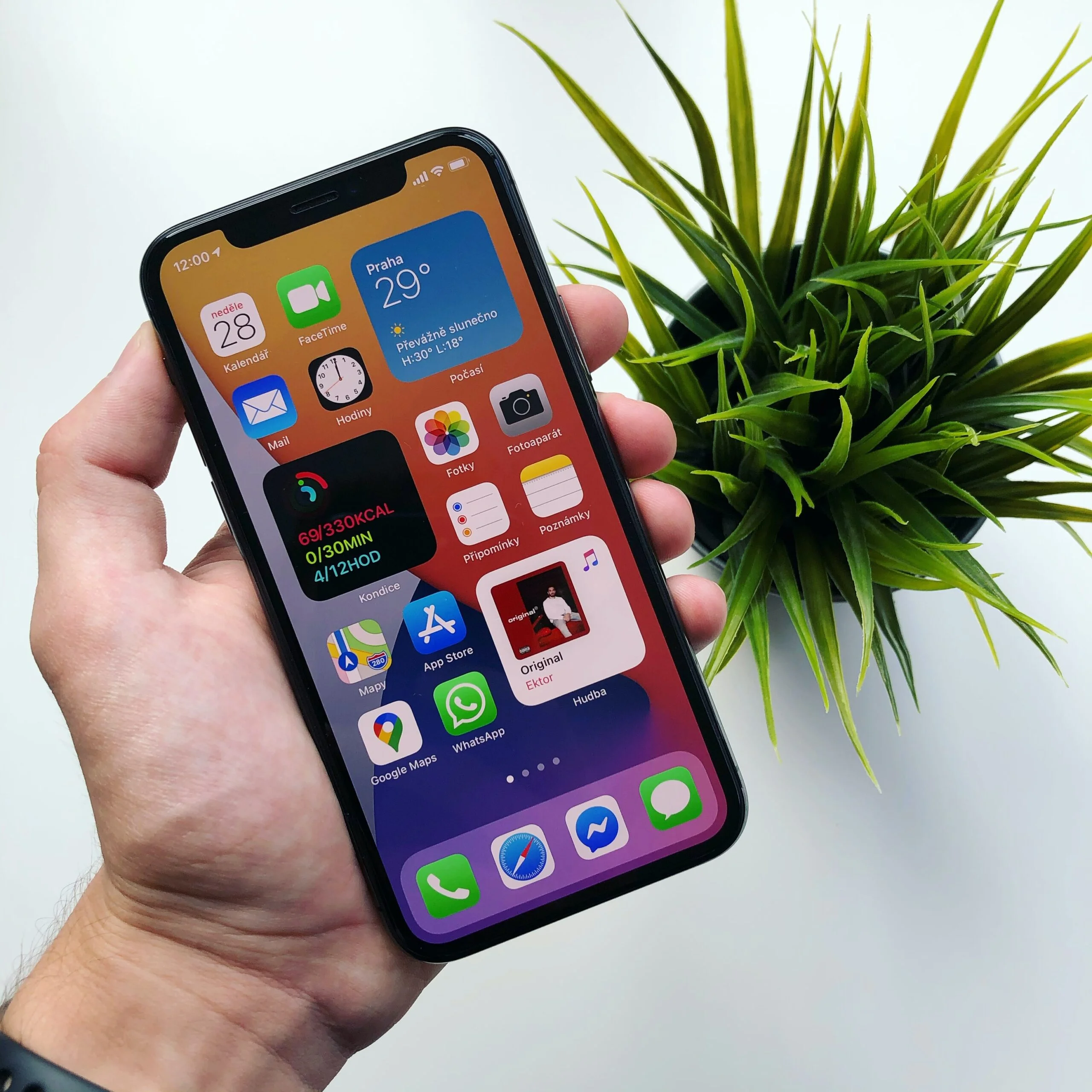
IOS app application development company
A reliable IOS app application development company to transform your iOS app ideas into stunning realities.
Vingsfire is a leading iPhone app development company in India & Dubai that specializes in iOS mobile app development for iPhones, iPads, and Mac. The company with headquarters in India and has branch offices in Dubai Abu Dhabi, Sharjah, Al Ain, and Ajman. We are professionals with regards to User Interface in iPhone App Development Services apart from a plethora of other services as well. Avail of our services and be enthralled by the work which our well seasoned and talented iOS app developers have to offer.
Vingsfire has rated the best iPhone app development company in Chennai and Dubai.
There are 5 salient facts on IOS app development that require utmost attention which are as follows a) An Appealing design compliments a good app development – As user interface (UI) plays a very important role as the more appealing user interface (UI) or design is the more interested the end-user would be. b) Compatibility with multiple devices is a requisite – Since mobiles are getting launched on a quarterly or half yearly basis it is important that the developed app is compactable with latest launched iPhones and IOS versions. c) Innovation is the key – the more innovative and user-friendly the app is the more end user would be interested to use. d) Knowledge regarding store’s Terms & Conditions is essential – As all the applications would be downloaded through the app store medium it is important to know the essential terms and conditions of the app store. e)Working for marketing and promotion – when all the above things said have been achieved it reduced a major burden in marketing and promotion of the newly developed application.
Frequently Asked Questions (FAQ)
Yes, But that may not be needed. We make sure that you get what you asked for. Before we start the work, we will have a consultation with you to understand your needs.
Sure, if you have any such issues, we are ready to help. Just contact us and we will take care into it.
There can be many reasons. We will take into account all the reasons and provide the solution for it.
No, it is not common. As with us we make usre that you get the best quality app. So there is no need to worry about crashing.
If you have a run time error, we will look into it and rectify it.
I heard that there is a chance for bugs to occur after the launch. Is it the same with your company?
No, We know that this can be a problem. We take this into account, before the launch and during the development stage.
Of course, yes. We work on cross platform projects. We make use of different platforms and try to integrate them.
Yes, we work on cross platform projects such as react native.
Yes, if you need that we are happy to help you and come up with a solution.
Yes, we can use different coding languages. Javascript, python, all can be used.
Mobile app development is the process of building mobile applications on mobile devices.
Mobile app development requires creating softwares that can be installed on mobile devices.
Yes, we do test and make sure that everything is working properly. Only then we make the final launch.
Yes, we do take into consideration the scalability of the apps, the hardware requirements and many other aspects of the mobile apps.
The best two mobile app platforms are Android and iOS.
The different approaches in developing the mobile app are native mobile applications, cross-platform native mobile applications, hybrid mobile applications and progressive web applications.
1. Understand the requirement
2. Develop the Product
3. Test the product.
User experience is what customers feel when they use your products
Designers make sure that the mobile application looks crips and pleasurable. User Interface Design is the process of making your app look perfect, following the latest design trends, so that it complements the user experience.
1. Building User Flow / Diagram for each screen
2. Creating Wireframes
3. Choosing Design patterns, palettes, and elements
4. Creating mockups
5. Creating an animated prototype and asking testable questions
6. Give final touches to the mockup based on user feedback
Mobile Application Development
Mobile application development is the process of creating software applications that run on a mobile device, and a typical mobile application utilizes a network connection to work with remote computing resources. Hence, the mobile development process involves creating installable software bundles (code, binaries, assets, etc.) , implementing backend services such as data access with an API, and testing the application on target devices.
Mobile application development is the process of creating software applications that run on a mobile device, and a typical mobile application utilizes a network connection to work with remote computing resources. Hence, the mobile development process involves creating installable software bundles (code, binaries, assets, etc.) , implementing backend services such as data access with an API, and testing the application on target devices.
Mobile application development is the process of creating software applications that run on a mobile device, and a typical mobile application utilizes a network connection to work with remote computing resources. Hence, the mobile development process involves creating installable software bundles (code, binaries, assets, etc.) , implementing backend services such as data access with an API, and testing the application on target devices.
Mobile application development is the process of creating software applications that run on a mobile device, and a typical mobile application utilizes a network connection to work with remote computing resources. Hence, the mobile development process involves creating installable software bundles (code, binaries, assets, etc.) , implementing backend services such as data access with an API, and testing the application on target devices.
Mobile Applications and Device Platforms
There are two dominant platforms in the modern smartphone market. One is the iOS platform from Apple Inc. The iOS platform is the operating system that powers Apple’s popular line of iPhone smartphones. The second is Android from Google. The Android operating system is used not only by Google devices but also by many other OEMs to built their own smartphones and other smart devices.
Although there are some similarities between these two platforms when building applications, developing for iOS vs. developing for Android involves using different software development kits (SDKs) and different development toolchain. While Apple uses iOS exclusively for its own devices, Google makes Android available to other companies provided they meet specific requirements such as including certain Google applications on the devices they ship. Developers can build apps for hundreds of millions of devices by targeting both of these platforms.
Alternatives for Building Mobile Apps
There are four major development approaches when building mobile applications
- Native Mobile Applications
- Cross-Platform Native Mobile Applications
- Hybrid Mobile Applications
- Progressive Web Applications
Each of these approaches for developing mobile applications has its own set of advantages and disadvantages. When choosing the right development approach for their projects, developers consider the desired user experience, the computing resources and native features required by the app, the development budget, time targets, and resources available to maintain the app.
- Native Applications
- Cross-Platform Applications
- Hybrid-Web Applications
- Progressive Web Applications
Why Choose the Hybrid/Cross-platform Approach?
One problem with native mobile application development is that it requires a highly specialized skill set. Although there are large and vibrant developer communities for C and Java — the language families that are mostly used for native development –, there are fewer developers who are knowledgeable in platform-specific versions of those languages and their respective IDEs. In fact, skilled native app developers are in such demand, that many companies are hard-pressed to hire and retain them on staff, and instead they frequently have to resort to outside 3rd party design and development houses to build their apps for them.
How Hybrid and Cross-platform Frameworks Work?
Hybrid apps allow developers to use web technologies of HTML5/CSS/JavaScript and then encapsulate those web applications in a container that allows the web application to act like a native application on the device. Since hybrid mobile apps are just web apps running on an embedded browser environment, most of the code from a web app can be used to build a mobile app. As rendering and runtime performance of mobile browsers are ever-increasing, hybrid development is a viable alternative for web developers who want to build mobile apps quickly.
Similarly, PWAs are written using traditional web application programming technologies usually including some variant of JavaScript, HTML5, and CSS, and are accessed initially through a browser on the device or computer.
Most cross-platform frameworks such as – React Native and Native Script – provides native components to work with the cross-platform code, while some others such as Flutter and Xamarin compiles cross-platform code to the native code for better performance.
The Mobile Application Development Lifecycle
There are two interlinked core components of a mobile application: 1) the mobile application “Front-End” that resides on the mobile device, and 2) the services “Back-End” that supports the mobile front-end.
Front-end vs. Back-end
In the early days of the modern smartphone applications era, mobile applications went through a similar evolution as first websites. At first, the applications and sites where wholly contained within themselves and acted as little more than static advertisements for the brand, company, product, or service.
However, as connectivity and network capabilities improved, the applications became increasingly connected to sources of data and information that lived outside of the app itself, and the apps became increasingly dynamic as they were able to update their UI and content with data received over the network from queries to data sources.
As a result, the mobile front-end applications increasingly rely on and integrated with back-end services which provide data to be consumed through the mobile front-end. Such data can include, for example, product information for e-commerce apps or flight info for travel and reservation apps. For a mobile game, the data may include new levels or challenges and scores or avatars from other players.
How Front-end ‘Talks’ to the Back-end?
The mobile front-end obtains the data from the back-end via a variety of service calls such as APIs. In some cases, these APIs may be owned and operated by the same entity developing the mobile application. In other cases, the API may be controlled by a third party and access is granted to the mobile application via a commercial arrangement.
For example, a developer may obtain social media or advertising content by making calls to media or advertising company services. In this case, a developer may have to sign a contract in order to obtain credentials and a key that grants access to the API and governs how that developer can use it, how much it will cost, or how frequently it may be called, or how much data can be requested over what time period.
Why Developers Use a Cloud-backend?
For most of the applications, mobile developers are responsible for creating and managing the back-end services for their application. The mobile developer may not be an expert or even particularly skilled in spinning up and running a back-end infrastructure.
In such a case, developers may prefer to take advantage of a cloud services provider — a backend-as-a-service provider — that handles all of the drudge work and heavy lifting of managing back-end capabilities, so the developers can focus purely on the features and functionality they are building in their app, without having to worry about scalability, security, and reliability.
The Mobile Application Front-End
The mobile front-end is the visual and interactive part of the application the user experiences. It usually resides on the device, or there is at least an icon representing the app that is visible on the home screen or is pinned in the application catalog of the device. The application can be downloaded from the platform app store, side-loaded directly onto the device, or can be reached through the device’s browser, as in the case for PWAs.
What a Front-end Development Workflow Looks Like?
When a developer says they are a mobile application programmer, they are most often referring to this front-end part of the application, and they are skilled in the languages and technologies that are used to create this front-end application.
Depending on the size of the team producing the app, there may be many different people involved in the design and development of the front-end mobile app. The team size can range from a single developer who does everything associated with building the app, to tens, hundreds, and more people with specialized skills.
For example, there may be dedicated creative/graphics designers who are responsible for creating visual elements of applications like icons, backgrounds, colors, themes and other parts of the app. The team may also have user experience and user interface designs who work on the layout of the components, how they interact with each other and the user. In the case of certain types of games, a team may include motion graphics developers and even engineers who develop engines that govern the physics of how components move in the app, like a car in a racing game.
How Mobile Aps Integrate with the Backend?
Regardless of the size of the team, a critical element of the development effort is building the app logic that is responsible for making network calls to the back-end services, retrieve data and update the data in the back-end systems with new information generated from the app.
These back-end services are typically accessed through a variety of application programming interfaces, most commonly known as APIs. There are different types of APIs, such as REST and GraphQL, and there are also a wide variety of means and styles of accessing them. While some back-end service APIs are available directly to the application through calls in the platform itself, many of the specialized services have to be integrated into the app via a software development kit, commonly known as an SDK. Once the SDK has been added to the app via the development environment, then the application can make use of the APIs defined in the SDK.
How to Interact with the Backend Data?
An example of a back-end service for a mobile front-end could be a database that contains information used in the app. To access the database directly, the mobile developer would have to know the network location of the database, the protocol for accessing the database, the credentials for authenticating and authorizing the data access, and the specific database commands needed to extract the needed data.
Alternatively, the developer can utilize a specialized API when interacting with the database; the developer may only have to know the parameters needed in a method call to get or updated the needed information. In some cases, the mobile developer may develop these APIs themselves or use the API definition provided to them by the owner/operator of the back-end resource.
Typically, a REST API is used to interact with data sources on the cloud, such as a cloud database. A GraphQL API is also another option for developers, as it makes easy to work with backend data in a mobile application. GraphQL provides querying support through a single API endpoint, and a data schema that can be used to build and easily extend data models that are used in the app.
The Mobile Application Back-End
Regardless of what front-end platform or development methodology is being used, delivering high-quality mobile applications that delight and retain users requires reliable back-end services.
Given the critical importance of back-end services for the success of the mobile application, the developers have several important architectural decisions that they must consider. These decisions include which services should they build themselves and which third party services should they leverage, and then should they run and maintain their own services or should they take advantage of 3rd party services.
The answer is increasingly clear; to improve developer productivity and efficiency, mobile app programmers should only build their own services if they are highly specific to the domain of the application and embody unique intellectual property. Also, even for the services they build themselves, they should almost always leverage cloud-based services to build and maintain their backend infrastructure.
Key Mobile Application Services
There are hundreds of cloud and 3rd party services that mobile application developers can leverage to speed up the development and delivery of their applications. However, it’s unlikely that a developer is going to be able to become an expert in each of these individual services.
Instead, the mobile developers should look for a development environment that makes it easier for them to integrate, use, and consume the most commonly required capabilities into their application quickly and easily, while still preserving the freedom to take advantage of the many individual services available.
Essential
- User Sign-up/Sign-in and Management
- Social login (Facebook sign-in, Twitter sign-in, etc.)
- Analytics and User Engagement
- Push Notifications
- Real Device Testing
Data Services
- Cloud Storage
- Real-time and Offline Data
- Application Logic/Cloud Functions
Machine Learning
- Conversational Bots
- Image and Video Recognition
- Speech Recognition
